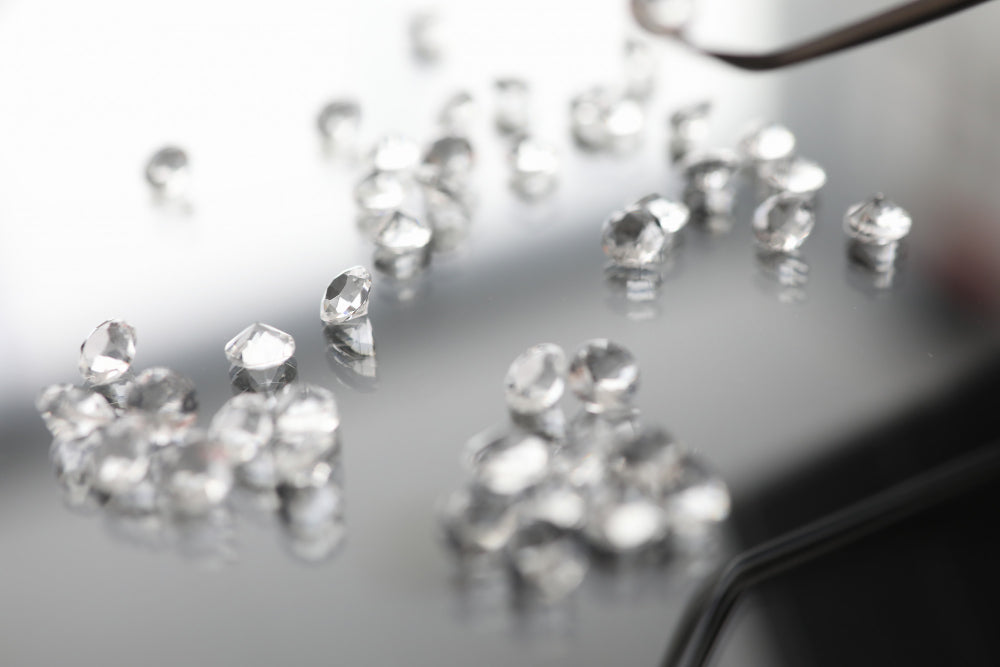
Decoding Diamond Purity: A Comprehensive Guide to Ensuring Quality
Diamonds, with their timeless allure and captivating brilliance, are cherished symbols of love, elegance, and luxury. However, not all diamonds are created equal. Understanding diamond purity is essential for ensuring you invest in a gemstone of the highest quality. In this guide, we'll explore the various factors that contribute to diamond purity and how to conduct a thorough purity check.
The 4Cs: A Foundation for Quality Assessment
Before delving into diamond purity, it's essential to grasp the fundamentals of the 4Cs: Cut, Color, Clarity, and Carat Weight. These factors, established by the Gemological Institute of America (GIA), serve as a universal standard for evaluating diamond quality.
- Cut: Refers to the proportions, symmetry, and polish of a diamond, influencing its brilliance and sparkle.
- Color: Describes the presence or absence of color in a diamond, with colorless stones being the most valuable.
- Clarity: Indicates the presence of internal and external flaws, or inclusions, within a diamond. The fewer inclusions, the higher the clarity grade.
- Carat Weight: Measures the size or weight of a diamond, with larger diamonds typically commanding higher prices.
Diamond Purity: Understanding Clarity Grading
Of the 4Cs, clarity is perhaps the most crucial aspect of diamond purity. Clarity grading assesses the presence of imperfections, or "birthmarks," within a diamond, which can affect its brilliance and transparency. The GIA Clarity Scale ranges from Flawless (FL) to Included (I), with various grades in between:
- Flawless (FL) and Internally Flawless (IF): Diamonds with no internal or external flaws visible under 10x magnification.
- Very, Very Slightly Included (VVS1/VVS2): Diamonds with minute inclusions that are extremely difficult to detect under 10x magnification.
- Very Slightly Included (VS1/VS2): Diamonds with minor inclusions that are somewhat difficult to detect under 10x magnification.
- Slightly Included (SI1/SI2): Diamonds with noticeable inclusions that are easy to detect under 10x magnification but may not be visible to the naked eye.
- Included (I1/I2/I3): Diamonds with obvious inclusions that are visible to the naked eye and may affect transparency and brilliance.
Conducting a Diamond Purity Check
When purchasing a diamond, it's essential to verify its purity to ensure you're getting the quality you expect. Here are some steps to conduct a thorough purity check:
-
Request a Diamond Grading Report: Obtain a diamond grading report from a reputable gemological laboratory, such as the GIA or AGS (American Gem Society). The report provides detailed information about the diamond's 4Cs, including its clarity grade.
-
Examine the Diamond Under Magnification: Use a jeweler's loupe or microscope to examine the diamond for inclusions and blemishes. Pay close attention to areas such as the table, crown, and pavilion, where inclusions are most likely to be visible.
-
Inspect the Diamond in Different Lighting: Examine the diamond under various lighting conditions, including natural daylight and artificial light, to assess its transparency and brilliance. A high-quality diamond will exhibit exceptional sparkle and fire in any lighting environment.
-
Consult with a Professional Jeweler: Seek guidance from a certified gemologist or experienced jeweler who can provide expert advice and assistance in evaluating diamond purity. They can help you interpret the diamond grading report and identify any potential concerns.
Conclusion: Investing in Quality and Confidence
In the world of diamonds, purity is synonymous with quality and value. By understanding the factors that contribute to diamond purity and conducting a thorough purity check, you can make an informed decision when purchasing a diamond. Whether it's for an engagement ring, anniversary gift, or personal indulgence, investing in a high-quality diamond ensures that your cherished gemstone will sparkle with brilliance and beauty for generations to come.


